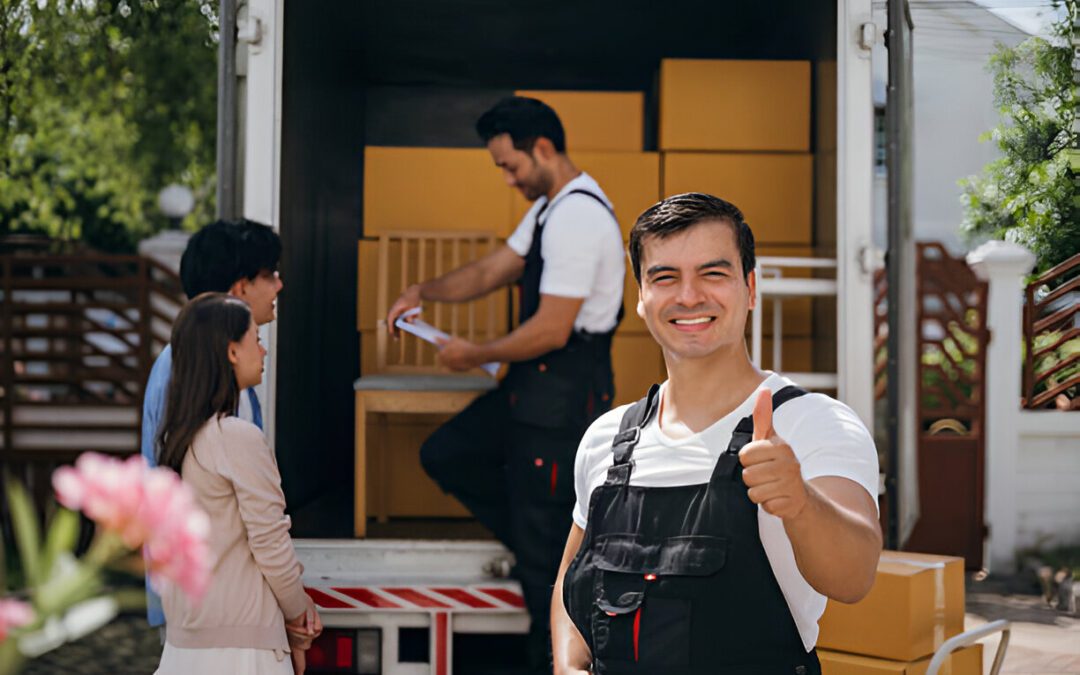The relocation does not necessarily have to be stressful. Coupled with the right plan, the right team, and the right tools, one can easily relocate without any apprehensions. This guide by Always Safe and Professional Moving is an excellent guide, whether you are transferring within town or state, as it will take you through all the steps of transferring, planning, packing, and even delivery and installation.
1. Create a Moving Timeline
The basis of any successful move is a proper schedule. Aligning with plans will allow you to think reasonably and prevent the stress of running at the last minute. It also assists you in organizing your moving company and other service providers. A schedule keeps you on track and prevents you from missing anything.
Checklist:
- Choose your moving date
- Inform your agent or landlord
- 4–6 weeks prior to your move, book your moving company
- Schedule utility transfers
- Send an update of address to banks, subscriptions, and governmental agencies
You take time out to plan your move so that you have time to deal with the logistics, paperwork, and coordination. This action preconditions a successful and systematic move.
2. Select a Licensed and Insured Moving Company
When you contract professionals, you have a sense of ease. Search for licensed, insured, and experienced movers for residential or business moves. An established business will have fair prices and clear communication initially onwards.
Checklist:
- Ask for a written estimate
- Confirm services consisted of (packing, transport, storage)
- Talk about the problem of access (stairs, elevators, parking)
- Review and verify credentials
The company of choice is Always Safe and Professional Moving, as they are reliable and will make sure that your move is handled carefully and your belongings are kept safe. It also minimizes the chances of delays, damages, or concealed expenses.
3. Declutter Before You Pack
Practicing less is being smarter. Decluttering will allow you to save on space, money, and begin afresh in your new living quarters. It is also an excellent time to give or recycle the things you no longer need.
Checklist:
- Categorize into keep, donate, recycle, and discard
- Empty out the closets, basements, and garages
- Sell or sell off furniture you do not use
- Get rid of outdated products and damaged goods
Disposing of things that you do not use will make the process of packing easier and ensure you settle in the new environment only with what you really require. It also reduces your costs of moving and accelerates the whole process.
4. Pack Strategically
Packing is not simply the act of filling the boxes but rather safeguarding your products and ensuring that it is not difficult to unpack. Smart methods can be used to store and protect the goods during the relocation. Some planning now will save plenty of time in the future.
Checklist:
- Put room and contents labels on them
- Wardrobe boxes should be used to hang clothes
- Pack delicate products in bubble-wrapping material or towels
- Weighty goods to be packed in tiny boxes
- Carry important things and papers
Smart packing avoids damage, lessens confusion, and allows movers to put the boxes in the location where they belong. It also allows making the process of unpacking less stressful and more effective.
5. A Moving Day Essentials Kit
Moving day is long and hard to predict. A kit filled with your essentials is a way of being comfortable and convenient when moving into your new residence. It even spares you the hassle of nestling in boxes when you are feeling weary and want to sleep.
Checklist:
- Toiletries and medications
- Electronics and chargers
- Snacks and water
- Pet supplies
- Replacement of clothes and bedclothes
This transitioning kit is necessary to keep you refreshed and in order. It is a little thing, but a great thing in the way of enjoying your first night in your new place.
6. Keep Furniture and Valuables Safe
Vast goods and treasures require additional attention. Transport is done properly through wrapping and handling to avoid damage. Whenever you do not know how to pack something, seek the services of your movers or hire professional packers.
Checklist:
- As much as possible, disassemble furniture
- Cover mirrors, artwork, and electronics
- Apply padding, shrink wrap, and straps
- Label fragile items clearly
- Store hardware in bags labelled
Being mindful of securing your things will guarantee its safe delivery, and you will never have to spend a lot of money repairing or replacing them. It is also a sign of respect for the investment made in your home.
7. Establish Logistics and Access Information
Delays should be avoided because all the logistics should be checked in advance. Personal guidelines assist your relocation team in operating effectively and avoiding misunderstandings on the moving day. This is a process that is of particular significance to apartment buildings and gated communities.
Checklist:
- Give instructions on parking and entry of the building
- Reserve elevators if needed
- Be prepared in case of weather conditions
- Guard floors and doorways
- Provide contacts with your movers
Moving time is saved for the movers when they are aware of what to expect, and they are able to evade needless complexities. It also makes you be in control and not be surprised in the last minute.
8. Move on with Your Mobile Team
Communication helps in keeping your move on track. Be around when they need you and provide what they require of you. In case there is any change, they should be informed so that something can be done without wasting time.
Checklist:
- Check the time of arrival and phone number
- Talk about the manuals for dealing with fragile items
- Questions concerning timing and delivery should be asked
- Be available at all times of the day
Responsiveness and clarity are some of the qualities that will assist your team in providing an efficient and smooth experience. It also creates trust and keeps your expectations as well.
9. Inspected New Space Before Unloading
And a few minutes before you unpack, you want to check out your new home. This aids you in planning and identifying the problems at an early stage. It will also provide you with an opportunity to instruct movers; you will be able to organize your space.
Checklist:
- Confirm the cleanliness and maintenance problems
- Take photos of any damage
- Plan furniture layout
- Direct movers’ placement of boxes
- Established utilities are operational
Working in a clean environment makes you ready to get to work, and an abbreviated tour of the area helps you feel prepared to work with ease and comfort. It also eliminates future conflicts with landlords or property managers.
10. Unpack Strategy and Settle In
Unpacking does not necessarily need to occur immediately. The important rooms should be taken first, and the others can then be tackled gradually. It is better to remain organized so that you can get home sooner and with less stress after the move.
Checklist:
- Begin with the kitchen, bathroom, and bedroom
- Recycle boxes and materials
- Organize items as you go
- Take breaks to avoid burnout
- Congratulations on your successful relocation
Intentional unpacking helps you to maintain a cool and functional atmosphere that assists you in your everyday routine. It is also one way to enjoy your new space without being overwhelmed.
Final Thoughts
Relocating is one of the significant life changes, yet it does not need to be a stressful process. Clients can move with confidence with such a checklist and a trusted team, such as Always Safe and Professional Moving. Whether it is planning and packing or delivery and set-up, all these processes are simpler when one is ready.
Tired of stressing out to move? Go to Always Safe and Professional Moving and get your free quote. Your action is to be done professionally, safely, and with peace of mind.
Frequently Asked Questions
In how many days should I order a moving company?
At minimum, book 4–6 weeks before your move, and particularly during seasonal times. This makes them available and provides time to prepare.
Do movers pack all or only big things?
Complete packing can be done when using full-service movers, although it is possible to do partial packing or do it yourself. Always make clarifications on bookings.
How do you take the most delicate items?
Wrap them in bubble wraps, heavy boxes, and label. Specialty packing is also provided by movers when delicate or high-value items are to be packed.
Can I move during bad weather?
Yes. Professional movers implement safety measures in order to keep your items and property safe. The weather can have an impact on time, and therefore, make plans.
What if my new house is still unready?
Enquire about the short-term storage. Numerous movers are providing safe storage options with climate control to store your goods.

